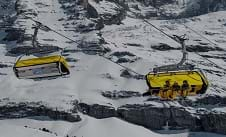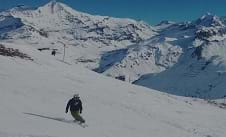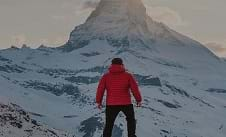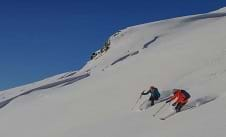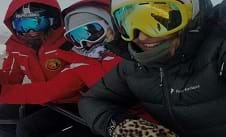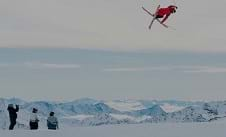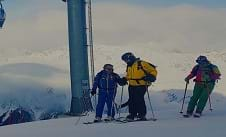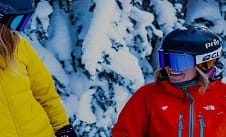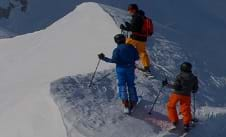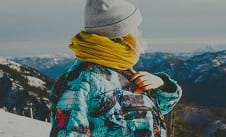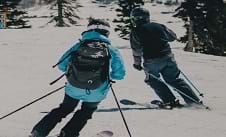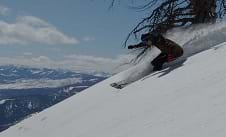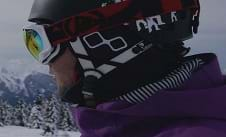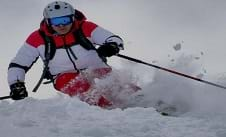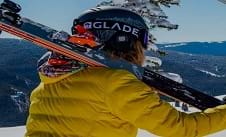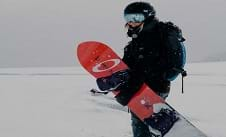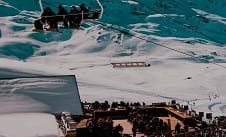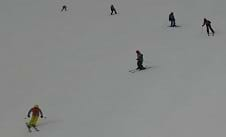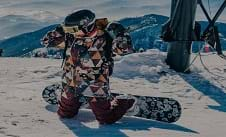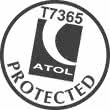Skis guide
Buying skis for the first time can be an intimidating process. There are many different types of skis on the market and lots of contrasting factors to consider. People often want the best skis with the latest advances, but in truth, the best ski is the one most suited to your needs on the slopes. With this guide, we aim to simplify the ski selection process.
This guide will break down the process into the sections you need to consider when choosing your next pair of skis; length of skis, width, ability, preferred mountain terrain, rocker type, and radius of ski. First-time buyers should always go to a retailer like Snow & Rock and Elis Brigham for advice on the best-suited equipment.
with your own travel concierge. Don’t hesitate to drop us a line – we’ll
help plan your perfect Ski Holidays.
020 7770 6888 ← online or call ↴
020 7770 6888
Length of skis
Choosing the correct length ski is dependent on a few components- physical build, skiing ability, and riding style.
To get a good indication of your ideal ski length, have the skis stand upright, and check that they are somewhere between the bottom of your chin and the top of your head. A shorter ski is more practical for a novice. This length will help you if you are a beginner and help you link basic turns, offering suitable stability at slower speeds. However, if you’re a more advanced skier, you will need the extra length to provide stability when turning at pace on hardpack snow or skiing off-piste in deep snow conditions.
Width of skis
The width is an important gauge of how the ski will feel and perform. This measurement is taken from the narrowest point on the ski, typically in the centre.
Narrow width skis are better suited for on-piste skiing as this permits short, sharp turns. Wider widths offer a larger surface area to provide your skis greater floatation in deep powder.
Skier ability
It is crucial to find the correct ski that will complement your ability on the slopes. We have divided this section into 3 subcategories: beginner, intermediate, and advanced.
Beginner (1-2 weeks experience)
Started to link turns on greens and blue - Traditionally, a beginner skier is better suited to piste skis which offer more forgiveness if you make a mistake. Softer flex rating and narrow width all contribute to more control skiing down gentle slopes at slower speeds.
Intermediate (2-4 weeks experience)
You have more control and confidence in your skiing, taking on more blues and red rather than greens - At this stage, you would be looking for a ski with a slightly stiffer flex rating and a stronger wood core. This offers better turn initiation with the increased speed.
Advance (4+ weeks experience)
Control on all types of terrain. Ability to carve, effective short turns, and long turns with a well-developed technique - Aim for a mid to stiff level flex in your skis. This supports the high-speed carving and more intensified skiing you would expect from an advanced skier. Depending on the type of skiing, you can get off-piste, all-mountain, freestyle, and carving skis.
Preferred terrain
Piste Ski
A firm and narrow ski with less than 85mm width to enable smooth and responsive turns on-piste.
All-Mountain Ski
Versatile in all conditions. Large rocker tips for the deep powder conditions, but narrow width for on-piste carving.
Freestyle ski
These skis tend to have a much softer flex to absorb shock. Twin tips are for switch skiing (skiing backward) and are generally lightweight to allow more mobility when doing tricks or spinning in the air.
Freeride Ski
Wider width (90mm-120mm) for greater floatation in powder. Large rockers and flexible tips that will add further floatation.
Rocker type
Camber
Camber refers to the profile of the ski. This gives it an upwards-arching curve from the middle of the ski. Naturally, the skier's weight will compress the camber, directing equal pressure to the full edge length. The energy created in this motion will enable you to pop into a turn transition. This is ideal for piste/carving skiing or advanced freestyling skiing.
Rocker
The rocker is the opposite of the camber, where the tip and tail are curved away from the snow. This offers better mobility and floatation in deep snow. However, forming turns and general manoeuvrability on-piste with this ski profile becomes tricky with the lack of edge.
Flat
This profile is completely flat along the length of the ski. The flat profile makes easy transitions, with better edge grip than the Rocker and better manoeuvrability than the Camber. Typically, this is good for freeride and freestyle skiing.
Ski radius
The term ski radius refers to the ski’s sidecut. The arc that forms as a result of this sidecut is used to create an imaginary circle, the radius of which will give you an idea of the natural turning ability of your ski. For example, skis with a narrow width, in terms of their tips to tails, will allow you to initiate turns and carve effectively. Alternatively, skis with a wider width will possess a longer sidecut radius which is better for bigger, long radius turns. Turning slowly at a higher speed is often more useful for powder skis.
Choosing skis FAQ:
This depends on your ability level. The shorter the ski, the easier they are to control and improve on. Beginners would usually want a ski that measures just below your chin – for intermediates the top of the ski should between your chin and your nose. It comes down to personal preference for advanced skiers, but they are usually as tall and in some cases taller than you.
Every year there are great leaps in the technology used to design the ideal ski – there are also different designs for people of different abilities.
When first learning to ski, you want to make it as easy as possible to manoeuvre. The ideal ski for a beginner would be on the lighter and shorter side as this will take less effort to get the turning movement from the ski. To make balancing easy a ski that is around 90mm underfoot is best as this is wide enough base to help you balance while also being thin enough to find your edges.
You will be mainly sticking to groomed runs at a lower intermediate level, so a firm piste ski is your best option. Get a ski on the narrower side underfoot – around 80mm is ideal as you’ll be able to get on your edges easily.
If you’re on the higher intermediate side and are testing out a variety of terrains, then a wider ski is better at tackling more challenging terrain as it’ll give you a wider base for balance.
Intermediates want a heavier ski than beginners as it’s easier to gradually apply your weight to the ski when turning.
That depends on the type of skiing you’re doing. Expert skiers that ski groomed runs only are best suited to a firm, but flexible and thin ski as this will make it much easier to get on your edges and really carve into the mountain. Expert skiers that like to ski a bit of everything are best suited to an all-mountain ski – usually, 95mm+ all-mountain skis are great for balancing on bumpy or mogul covered runs while also being able to hold you’re their own in the powder.
There are several different types of skis all designed to get the optimum out of the style they’re designed for:
- Piste
- Race
- All Mountain
- Powder
- Telemark
- Free ride
- Free style
- Cross country
Piste skis are specifically designed for well-kept groomed runs – they’re on the thinner side usually around 75mm underfoot to make it easier to get on to your edges and properly carve up the mountain. The edges of the skis have a curved by design to make it easier to initiate and hold the turns comfortably.
It depends on what style of off-piste skiing you’re doing. Powder skis are the ideal ski if you’re looking for a day of fresh tracks after a dump the night before – the widest style of ski which can be upwards of 130mm underfoot these give you a great base of balance in the soft powder.
The alternative for off-piste skiing is freeride side skis. They are thinner than powder skis usually around 100mm+ underfoot. They are ideal for getting through the choppier off-piste terrain while also offering a wide enough base to easily ski fresh tracks.
Unzip the ski bag put the skis in – it is as easy as that! Larger ski bags may be able to fit a ski jacket and salopettes too.
Wheeled ski bags tend to be larger than carry ski bags, so there's more space for extra items. Sometimes skiers and snowboarders will only take a large, wheeled ski bag away with them, packing all their clothing and toiletries into the bag too. If you choose to do this, check the baggage allowance for your flight operator to make sure they wheeled ski bag isn't too heavy.
If there's space in your ski bag, yes you can pack clothes in your ski bag, but you should always check your airlines' rules when packing. Some airlines will only accept ski bags with skiing equipment; however, other airlines only measure weight limit.






